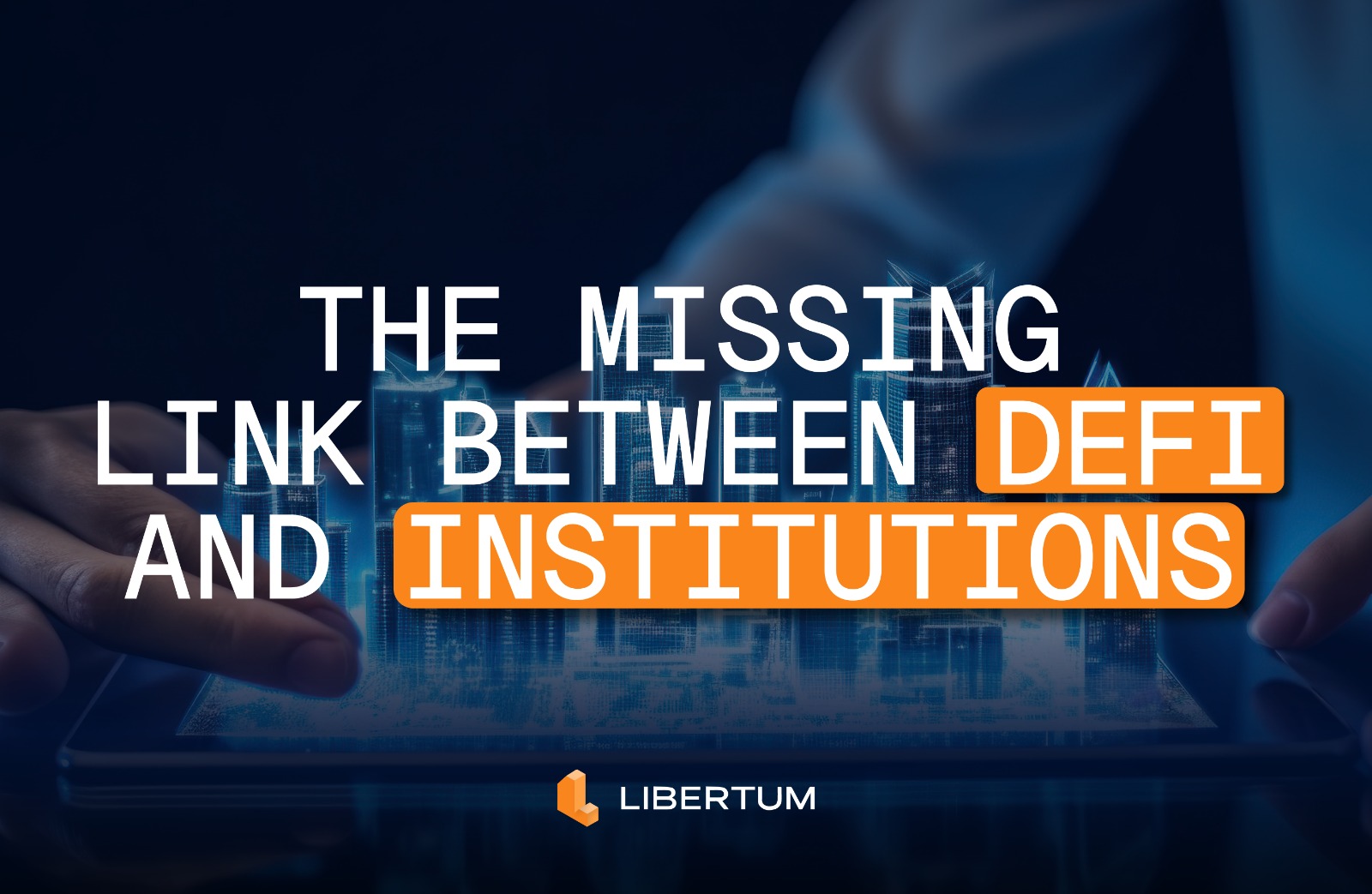For over a decade, two parallel financial systems have been evolving on-chain — one decentralized, permissionless, and open; the other compliant, regulated, and institutionally recognized. These systems have operated in silos, often at odds, yet both are indispensable to the future of global finance.
At Libertum, we don’t see this as a conflict to be resolved — we see it as a challenge to be integrated.
That’s why we’ve built infrastructure that can serve both the Web3-native and the institutionally regulated, not by creating two separate ecosystems, but by supporting programmable compliance that adapts to the user, asset, and jurisdiction.
This is the missing link between DeFi and institutions — and the foundation of a scalable financial system.
The Two Financial Realities
The Permissionless World of DeFi
DeFi revolutionized finance with composability, self-custody, and open access. Protocols like Aave, Curve, and Uniswap created global markets outside the reach of banks, intermediaries, or identity requirements. Innovation flourished.
But for institutions, DeFi often raises hard questions:
- Who is the counterparty?
- What jurisdiction governs the asset?
- Where are the compliance guarantees?
These aren’t critiques — they’re operational necessities for banks, funds, and governments. Yet dismissing DeFi misses the point. For crypto-native communities, small businesses, and users in underbanked regions, permissionless infrastructure is not a luxury — it’s the only viable option.
Libertum recognizes this and supports it through B-DEX: our decentralized bonding exchange with no KYC, no gatekeepers, and full Web3-native functionality. It’s a capital formation engine for those who want programmability without restrictions.
The Regulated Institutional Track
Institutions require enforceability, auditability, and legal certainty. Tokenizing real-world assets like real estate, equity, or debt isn’t just a technical challenge — it’s a regulatory one. Identity, governance, disclosures, and enforceable rights must be built into the asset from the start.
Libertum’s T-Suite does exactly this: it allows issuers to create fully compliant, modular tokenized assets with:
- Rule-based transfer restrictions
- Verified investor onboarding
- On-chain governance tied to off-chain legal frameworks
- Embedded rights, roles, and responsibilities within the token itself
This isn’t a bolt-on KYC service or a front-end filter.
It’s compliance at the protocol level, adaptable to multiple jurisdictions, yet seamless for users.
What Is Programmable Compliance?
Programmable compliance is the ability to enforce legal, regulatory, and operational constraints on-chain, dynamically and transparently. It allows you to define, update, and execute compliance logic as part of the asset itself.
This means:
- A token can refuse to transfer if the recipient lacks accreditation or jurisdictional approval
- A smart contract can adjust behavior depending on the user’s verified status
- A marketplace can serve retail, institutional, or DAO users with tailored permissions — from one unified codebase
Critically, it doesn’t mean everyone must comply with the same rules. It means the infrastructure knows which rules apply — and to whom.
Libertum’s Dual Stack: Open + Compliant
Rather than choosing a side, Libertum builds infrastructure that spans both paradigms:
| Layer | Web3 DeFi (Open) | Institutional (Compliant) |
|---|---|---|
| Marketplace | B-DEX: No KYC, bonding curve-based, composable | T-Site: Compliant storefront with investor portals |
| Tokens | Simple ERCs, full composability | Advanced rule-based tokens with identity & roles |
| Governance | Token-weighted or DAO-driven | Enforceable rights & role-based voting |
| Access | Global, permissionless | Jurisdiction-specific, rule-enforced |
| Compliance | None enforced by protocol | Embedded in smart contracts and user flows |
This dual stack means Libertum can support:
- A DAO issuing tokens for community fundraising on B-DEX
- A regulated fund offering fractionalized shares via T-Suite
- A real estate platform accepting both crypto and fiat, while issuing compliant digital deeds
- Projects that start on DeFi rails and graduate into regulated markets as they grow
We don’t force conformity. We offer progression.
Why This Approach Matters
By embedding compliance where it’s needed — and staying out of the way where it’s not — Libertum enables:
- Web3-native builders to raise and operate without friction
- Institutional players to participate without compromising legal requirements
- Asset owners to offer products across multiple jurisdictions from a single interface
- Developers to build on a flexible, modular stack that supports both retail and institutional flows
This isn’t just user segmentation. It’s a new financial architecture — one that:
- Doesn’t isolate compliant assets from DeFi innovation
- Doesn’t neuter DeFi with regulation meant for banks
- Doesn’t build parallel silos but enables composability between them
It’s an architecture for how finance actually works — with layers of trust, identity, and access, all orchestrated by programmable logic.
One Infrastructure. Many Realities.
The divide between DeFi and institutions isn’t going away — but it doesn’t have to remain a wall. It can become a switch — one that users, protocols, and issuers toggle based on what they’re building, where they’re operating, and who they’re serving.
At Libertum, we don’t see compliance as the enemy of innovation.
We see it as a design layer — one that, when programmed natively into the financial stack, allows us to serve both the old world and the new.
No compromise. No gatekeeping.
Just programmable choice — for a programmable economy.
